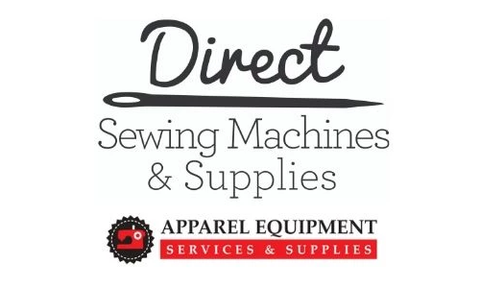News
Kids’ First Sewing Machine Gift Guide NZ – Mini Machines & Starter Kits for Creative Children
Kids love creating things they can actually use, and a mini sewing machine is the perfect first step. This Christmas, our guide highlights the best kids’ first sewing machines in New Zealand, including the Elna 525 Mini range and the fun Elna MI12 Minions machine. Paired with the Birch Handy Sewing Kit, these make thoughtful, practical gifts that inspire creativity and confidence. Perfect for beginners, young sewists and Christmas gifting in NZ.
Black November 2025: New Zealand’s Biggest Sewing Machine Sale Is Here!
Black November has officially begun and we’ve launched huge specials across our entire website. Fresh stock has just landed from our China trip, including Prym tools, Amann Rasant threads, SABA C, Omnigrid rulers and more. With cost-plus pricing on Brother, Janome and Elna, plus massive markdowns on Ricoma and industrial machines, this is the best time of the year to upgrade your sewing setup. Shop the full Black November sale now and enjoy fast NZ shipping and unbeatable value.
Outdoor & Marine Sewing Threads NZ: The Ultimate Guide to UV-Resistant Threads for Canvas, Upholstery & Boat Covers
Discover the best outdoor and marine sewing threads in New Zealand, from Gutermann Outdoor 40 for domestic machines to Amann Outdoor Pro, Coats Dabond, and A&E SunStop for professional use. Learn which UV-resistant thread suits your project, how to match Tex sizes, and why bonded polyester lasts longest in NZ’s harsh conditions.
How to Set Stitch Length & Thread Tension for a Perfect Stitch
Getting perfect stitches comes down to balance — the right stitch length, thread tension, needle size, and machine maintenance. Learn the starting “magic numbers” for different fabrics, why premium threads like Amann SABA, Gutermann and Madeira improve stitch consistency, how to match needle size to your fabric, and how simple cleaning and servicing keeps your machine performing beautifully. A must-read for anyone wanting professional-looking stitches every time.
The Benefits of Polycotton Thread: Why Sewers, Quilters & Bag Makers Love It
Polycotton thread is the go-to choice for NZ sewers, quilters, and bag makers who want strength, softness, and versatility. Discover why Amann Rasant 120, 75, and Oxella, along with Coats Terko Satin, are trusted for quilting, upholstery, and even dyeing in the film industry for perfect colour-matched results.
Core Spun Polyester Thread NZ – Why Gutermann, Amann SABA & Madeira Are the Best for Sewing & Overlocking | Industrial & Domestic Sewing
Learn why Gutermann, Amann SABA and Madeira core spun polyester threads are the best choice for sewing and overlocking in New Zealand. Durable, colourfast and machine-friendly threads for industrial and domestic sewing.
Why Omnigrid Quilting Rulers Are Loved by Quilters Around the World
Discover why Omnigrid rulers — made in the USA and trusted by quilters worldwide — are now available in New Zealand at Direct Sewing Machines & Supplies. Shop the full range of rulers and the Prym handle for ultimate precision.
The Complete Guide to the Prym VARIO Creative Tool and Accessories in New Zealand
Explore the complete Prym VARIO Creative Tool system — the all-in-one press for adding snaps, eyelets, rivets and fasteners with professional precision. This guide covers every compatible Prym VARIO Tool Set, from eyelets to Colour Snaps, plus expert tips and FAQs for sewists, bag makers and DIY crafters in New Zealand.
Best Handheld Garment Steamers in New Zealand
Looking for a faster, easier way to smooth out wrinkles? We’ve compared the best handheld steamers in New Zealand, including Philips, Jiffy, and TRA models. From compact foldable designs to high-performance steamers with style mats, discover which one suits your wardrobe best. Ideal for quick touch-ups and crease removal, these steamers are a must-have for fresh, wrinkle-free clothes in minutes.
The Complete Guide to Mini Irons for Your Craft & Sewing Room (or Travel!)
A full NZ guide to mini irons for sewing, quilting, and travel — featuring Birch, Bohin, and Oliso models plus top ironing mats to pair with them.
The Complete Bag Sewing Machine Solution in New Zealand
Direct Sewing Machines & Supplies offers New Zealand’s complete bag sewing solution — from Newlong, Yaohan, and Zoje machines to quality threads, needles, and accessories. Our experienced technicians also provide full repairs and servicing for all bag sewing machines, keeping your equipment running reliably year after year.
The Complete Guide to Jack Sewing Machine Accessories in New Zealand
Explore our newest collection of Jack sewing machine accessories — from Teflon feet and feed dogs to scissors, tweezers, and measuring tapes. Genuine Jack quality, now available at Direct Sewing Machines & Supplies New Zealand.
Why Direct Sewing Machines Has the Widest Range of Industrial Sewing Machines in New Zealand
Direct Sewing Machines & Supplies offers New Zealand’s largest range of industrial sewing machines — from basic plainsewers to fully automatic models across Singer, Jack, Juki, Brother and Zoje. Visit our showroom to test-drive any model or request a custom setup.
The Best Pin Cushions Every Sewist Should Own
Every sewist needs a good pin cushion. We’ve tested and reviewed our favourite designs—from the cute teapot and mannequin cushions to the clever Prym 2-in-1 weighted version. See which one suits your sewing style best and shop them all at Direct Sewing Machines & Supplies.
Why It’s Important to clean the base of Your Iron
A dirty iron can stain and damage your fabrics. Discover why cleaning your iron base is essential and shop NZ’s top iron cleaners for both industrial and household irons.
Janome MC100E & MC1000: The New Embroidery Machines Taking NZ by Storm
Janome’s latest release is here — the MC100E and MC1000 are designed for NZ sewers and embroiderers who want more power, precision, and creativity.
We’re Off to CISMA 2025 – Store Closed Saturday 27th September
We’ll be closed Saturday 27th September and running a reduced team Friday 26th as we head to CISMA – the world’s biggest sewing & textile expo. From Brother, Janome, Singer and Jack to Ricoma, Zoje, Silverstar and Schmetz, we’re learning from the best to bring New Zealand sewists the latest machines, tools and knowledge.
Husqvarna Viking Sewing Machines – Trusted for Generations in New Zealand
Direct Sewing is New Zealand’s official dealer for Husqvarna Viking sewing machines. From the simple Emerald 116 through to the advanced Designer Epic 3, we stock the full range of models trusted by generations of sewists. Explore our collection of sewing, quilting, and embroidery machines, backed by expert local support and full warranties.
The Complete Guide to Sewing Machine Needles in NZ
Choosing the right sewing machine needle makes all the difference. Our NZ guide covers sizes, types, and top brands — Schmetz, Groz-Beckert, Janome, and Singer.
Heavy Duty Sewing Machines: The Best Options for Upholstery, Denim and Leather
A practical buyer’s guide to heavy duty sewing. Compare Singer 4452 for home projects, Jack and Singer industrials for denim, Mirsew 0617B and Zoje 0303L for upholstery and canvas, plus Mirsew 1541 and Juki 2810 for serious leatherwork. Includes a plain-English explainer on shuffle vs compound walking feet and setup tips to prevent thread snaps.
Oliso vs Traditional Irons: The Ultimate Guide for Sewists in NZ
Not all irons are created equal. In this guide we compare traditional irons with Oliso’s smart auto-lift and project irons designed for sewists, quilters, and crafters in New Zealand. Explore the benefits, see our top Oliso models, and shop the full range online at Direct Sewing.
Spring Cleaning Your Sewing Room: Must-Have Organisers & Tools
Spring is the perfect time to refresh your sewing space. Discover the best organisers and tools – from spool racks, bobbin boxes, and sewing needles NZ to scissors, pins, and cleaning kits – to keep your sewing room tidy and inspiring.
Top 10 Must-Have Sewing Accessories Under $50
Sewing doesn’t have to be expensive – the right tools make all the difference. From Kai and Fiskars scissors to Clover chalk, Bohin measuring tapes, Sew Easy weights, and more, here are 10 essential sewing accessories under $50 to upgrade your sewing kit. Perfect for beginners and experienced sewists alike.
The Best Overlockers to Buy or Gift in 2025
Find the perfect overlocker for 2025 — from budget-friendly Janome models to air-thread Brother and Juki industrial machines. Ideal Christmas gifts for sewing enthusiasts across NZ.


























